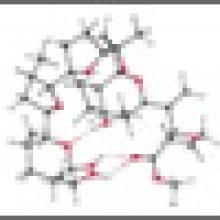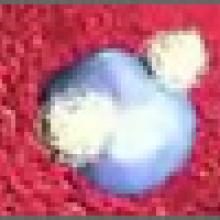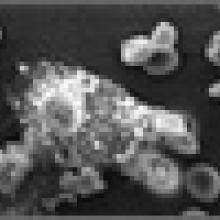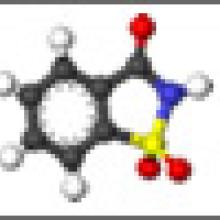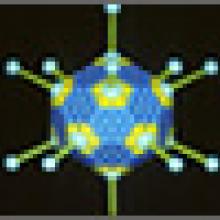Newsroom
The generally accepted view is that cancer forms in a step-wise progression. Changes (mutations) accumulate gradually over time, making the cells progressively more abnormal. Eventually, cancer cells arise. The process can take years to occur.
Researchers working with new DNA… more
Almost all chemicals taken into the body are modified and broken down during digestion in the stomach and intestines or after absorption. Because of this, experiments on cancer drugs and possible cancer prevention agents that work well in laboratories may not work as well in humans.… more
In order for cancer cells to survive, they hijack processes that naturally occur within the body. Because there are so many things needed for cells to survive, researchers are continuously discovering new ways to combat cancer progression. Researchers at the University of Texas MD Anderson Cancer… more
The 2006 approval of the HPV vaccine for use in the United States was accompanied by a large, public campaign targeted specifically at young women. Certain strains of human papilloma virus (HPV) can cause cervical cancer, while other strains may cause genital warts. The pharmaceutical company Merck… more
Chronic irritation can often trigger cellular changes that lead to cancer. This is sometimes the case in patients with repeated acid reflux, a condition in which the esophagus is repeatedly exposed to irritating acid from the stomach. Repeated exposure to this acid can result in an overall… more
The American Cancer Society recommends that all women age 40 and over have a screening mammogram every year. However, according to data presented at the 33rd Annual CTRC-AACR San Antonio Breast Cancer Symposium, only about half of eligible women with either employer-provided insurance or… more
Palliative care services focus on symptom control and pain management for patients with advanced and complex medical issues. Research shows that these services can also lower hospital costs while improving quality of life for patients. A recent study published in the Journal of… more
A Finnish research group has identified the antibiotic monensin as a potent killer of prostate cancer cells. The antibiotic was shown to induce cell death (apoptosis) of cancer cells but not normal cells. The antibiotic seems to work in several ways to target the cells. Treatments… more
A study presented at an American Association of Cancer Research (AACR) conference demonstrated that women are less likely to adhere to their treatment if they have higher co-pays. The study examined women taking aromatase inhibitors for breast cancer. They found that if the co-pays were… more
The breast cancer drug Herceptin® is used to treat cancers that produce too much of a particular protein (called ErbB or Her2). The ErbB protein sends signals that cause cells to reproduce and Herceptin® blocks those signals. A major problem with this treatment is that many cancers… more
Arsenic trioxide is a chemical that is already approved as a second line treatment for one form of leukemia. The compound was shown in this research to inhibit a critical signaling pathway. The drug was able to kill Ewing sarcoma and meduloblasoma cells in the lab and in animals with… more
Research has revealed that many types of cancer cells have a protein on their surface (calreticulin) that marks the cells as targets for destruction. The cancer cells also produce a protein that protects them from being destroyed (CD47). Whether or not the cancer cells die seems to be… more
A study in Austalia followed 1,621 people from 1992 until 2006 to see if daily application of sunscreen reduced the risk of melanoma. The researchers found that those volunteers who used sunscreen daily had a 50% reduction in melanomas detected. The melanomas that were detected in the… more
The DNA in our cells is highly organized. Part of that organization includes winding the DNA around balls (nucleosomes) made up of several different proteins called histones. Researchers have discovered that changes in the types of histones present in skin cells can drive the development of… more
About 90% of anal cancer cases are caused by infection with the human papillomavirus (HPV), the same virus that causes cervical cancer and head/neck cancers. The FDA has approved the use of Gardasil®, a vaccine that prevents infection with HPV, for the prevention of anal cancer. Men and women… more
Cancer cells use their “feet,” structures known as invadopodia, to spread throughout the body. Scientists have found a way to block the formation of these feet-like structures by blocking the Abl family of protein kinases. Suppressing these kinases also inhibited the protein that cancer cells use… more
For over 20 years, the role of saccharin has been a contentious subject in discussions of food and human health. This artificial sweetener is used in many popular diet foods and drinks due to its high level of sweetness (~300x sweeter than sugar) and the fact that it does not contain any calories.… more
Viruses are quickly becoming key players in the fight against cancer. Scientists are developing ways to modify the genetic material of viruses to make them tools in fight againts malignant cells. A study recently published in Cancer Biology & Therapy describes the development of a modified… more
The Food and Drug Administration (FDA) has begun the process of withdrawing the approval of bevacizumab (Avastin®) for the treatment of breast cancer. The agency states that the benefits of Avastin® do not outweigh the risks for this cancer type.








